Information Technology Risk Management in Enterprise Environments —— A Review of Industry Practices and a Practical Guide to Risk Management Teams
----- 企业环境的信息安全风险管理:产业实践评论与风险管理团队实践指南
PREFACE. ABOUT THE AUTHORS . PART I INDUSTRY PRACTICES IN RISK MANAGEMENT. 1. INFORMATION SECURITY RISK MANAGEMENT IMPERATIVES AND OPPORTUNITIES. 1.1 Risk Management Purpose and Scope. 1.1.1 Purpose of Risk Management. 1.1.2 Text Scope. References. Appendix 1A: Bibliography of Related Literature. 2. INFORMATION SECURITY RISK MANAGEMENT DEFINED. 2.1 Key Risk Management Definitions. 2.2 A Mathematical Formulation of Risk. 2.3 Typical Threats/Risk Events. 2.4 What is an Enterprise Architecture?. References. Appendix 2A: The CISSPforum/ISO27k Implementers Forum Information Security Risk List for 2008. Appendix 2B: What is Enterprise Risk Management (ERM)? 3. INFORMATION SECURITY RISK MANAGEMENT STANDARDS. 3.1 ISO/IEC 13335. 3.2 ISO/IEC 17799 (ISO/IEC 27002:2005). 3.3 ISO/IEC 27000 SERIES. 3.3.1 ISO/IEC 27000, Information Technology-Security Techniques-Information Security Management Systems-Fundamentals and Vocabulary. 3.3.2 ISO/IEC 27001:2005, Information Technology-Security Techniques-Specification for an Information Security Management System. 3.3.3 ISO/IEC 27002:2005, Information Technology-Security Techniques-Code of Practice for Information Security Management. 3.3.4 ISO/IEC 27003 Information Technology-Security Techniques-Information Security Management System Implementation Guidance. 3.3.5 ISO/IEC 27004 Information Technology-Security Techniques-Information Security Management-Measurement. 3.3.6 ISO/IEC 27005:2008 Information Technology-Security Techniques-Information Security Risk Management. 3.4 ISO/IEC 31000. 3.5 NIST STANDARDS. 3.5.1 NIST SP 800-16. 3.5.2 NIST SP 800-30. 3.5.3 NIST SP 800-39. 3.6 AS/NZS 4360. References. Appendix 3A: Organization for Economic CoOperation and Development (OECD) Guidelines for the Security of Information Systems and Networks: Toward a Culture of Security. 4. A SURVEY OF AVAILABLE INFORMATION SECURITY RISK MANAGEMENT METHODS AND TOOLS. 4.1 Overview. 4.2 Risk Management/Risk Analysis Methods. 4.2.1 Austrian IT Security Handbook. 4.2.2 CCTA Risk Assessment and Management Methodology (CRAMM). 4.2.3 Dutch A&K Analysis. 4.2.4 EBIOS. 4.2.5 ETSI Threat Vulnerability and Risk Analysis (TVRA) Method. 4.2.6 FAIR (Factor Analysis of Information Risk). 4.2.7 FIRM (Fundamental Information Risk Management). 4.2.8 FMEA (Failure Modes and Effects Analysis). 4.2.9 FRAP (Facilitated Risk Assessment Process). 4.2.10 ISAMM (Information Security Assessment and Monitoring Method). 4.2.11 ISO/IEC Baselines. 4.2.12 ISO 31000 Methodology. 4.2.13 IT-Grundschutz (IT Baseline Protection Manual). 4.2.14 MAGERIT (Metodologia de Analisis y Gestion de Riesgos de los Sistemas de Informacion) (Methodology for Information Systems Risk Analysis and Management). 4.2.15 MEHARI (Methode Harmonisee d'Analyse de Risques-Harmonised Risk Analysis Method). 4.2.16 Microsoft's Security Risk Management Guide. 4.2.17 MIGRA (Metodologia Integrata per la Gestione del Rischio Aziendale). 4.2.18 NIST. 4.2.19 National Security Agency (NSA) IAM / IEM /IA-CMM. 4.2.20 Open Source Approach. 4.2.21 PTA (Practical Threat Analysis). 4.2.22 SOMAP (Security Officers Management and Analysis Project). 4.2.23 Summary. References. 5. METHODOLOGIES EXAMPLES: COBIT AND OCTAVE. 5.1 Overview. 5.2 COBIT. 5.2.1 COBIT Framework. 5.2.2 The Need for a Control Framework for IT Governance. 5.2.3 How COBIT Meets the Need. 5.2.4 COBIT's Information Criteria. 5.2.5 Business Goals and IT Goals. 5.2.6 COBIT Framework. 5.2.7 IT Resources. 5.2.8 Plan and Organize (PO). 5.2.9 Acquire and Implement (AI). 5.2.10 Deliver and Support (DS). 5.2.11 Monitor and Evaluate (ME). 5.2.12 Processes Need Controls. 5.2.13 COBIT Framework. 5.2.14 Business and IT Controls. 5.2.15 IT General Controls and Application Controls. 5.2.16 Maturity Models. 5.2.17 Performance Measurement. 5.3 OCTAVE. 5.3.1 The OCTAVE Approach. 5.3.2 The OCTAVE Method. References. PART II DEVELOPING RISK MANAGEMENT TEAMS. 6. RISK MANAGEMENT ISSUES AND ORGANIZATION SPECIFICS. 6.1 Purpose and Scope. 6.2 Risk Management Policies. 6.3 A Snapshot of Risk Management in the Corporate World. 6.3.1 Motivations for Risk Management. 6.3.2 Justifying Risk Management Financially. 6.3.3 The Human Factors. 6.3.4 Priority-Oriented Rational Approach. 6.4 Overview of Pragmatic Risk Management Process. 6.4.1 Creation of a Risk Management Team, and Adoption of Methodologies. 6.4.2 Iterative Procedure for Ongoing Risk Management. 6.5 Roadmap to Pragmatic Risk Management. References. Appendix 6A: Example of a Security Policy. 7. ASSESSING ORGANIZATION AND ESTABLISHING RISK MANAGEMENT SCOPE. 7.1 Assessing the Current Enterprise Environment. 7.2 Soliciting Support From Senior Management. 7.3 Establishing Risk Management Scope and Boundaries. 7.4 Defining Acceptable Risk for Enterprise. 7.5 Risk Management Committee. 7.6 Organization-Specific Risk Methodology. 7.6.1 Quantitative Methods. 7.6.2 Qualitative Methods. 7.6.3 Other Approaches. 7.7 Risk Waivers Programs. References. Appendix 7A: Summary of Applicable Legislation. 8. IDENTIFYING RESOURCES AND IMPLEMENTING THE RISK MANAGEMENT TEAM. 8.1 Operating Costs to Support Risk Management and Staffing Requirements. 8.2 Organizational Models. 8.3 Staffing Requirements. 8.3.1 Specialized Skills Required. 8.3.2 Sourcing Options. 8.4 Risk Management Tools. 8.5 Risk Management Services. 8.5.1 Alerting and Analysis Services. 8.5.2 Assessments, Audits, and Project Consulting. 8.6 Developing and Implementing the Risk Management/Assessment Team. 8.6.1 Creating Security Standards. 8.6.2 Defining Subject Matter Experts. 8.6.3 Determining Information Sources. References. Appendix 8A: Sizing Example for Risk Management Team. Appendix 8B: Example of Vulnerability Alerts by Vendors and CERT. Appendix 8C: Examples of Data Losses-A One-Month Snapshot. 9. IDENTIFYING ASSETS AND ORGANIZATION RISK EXPOSURES. 9.1 Importance of Asset Identification and Management. 9.2 Enterprise Architecture. 9.3 Identifying IT Assets. 9.4 Assigning Value to IT Assets. 9.5 Vulnerability Identification/Classification. 9.5.1 Base Parameters. 9.5.2 Temporal Parameters. 9.5.3 Environmental Parameters. 9.6 Threat Analysis: Type of Risk Exposures. 9.6.1 Type of Risk Exposures. 9.6.2 Internal Team Programs (to Uncover Risk Exposures). 9.7 Summary. References. Appendix 9A: Common Information Systems Assets. 10. REMEDIATION PLANNING AND COMPLIANCE REPORTING. 10.1 Determining Risk Value. 10.2 Remediation Approaches. 10.3 Prioritizing Remediations. 10.4 Determining Mitigating Timeframes. 10.5 Compliance Monitoring and Security Metrics. 10.6 Compliance Reporting. References. BASIC GLOSSARY OF TERMS USED IN THIS TEXT. INDEX.
{{comment.content}}
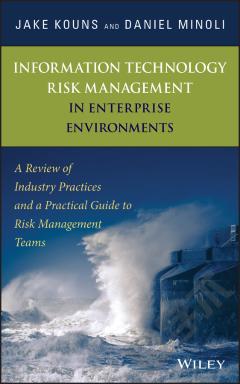
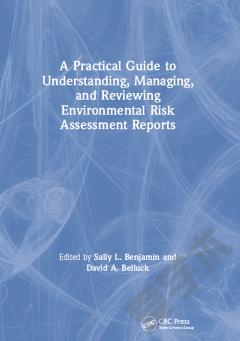
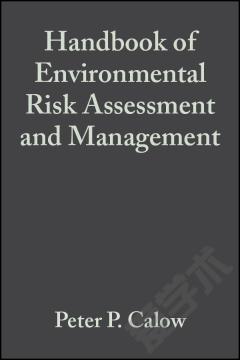
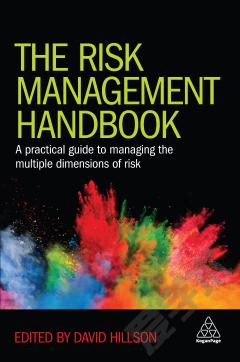
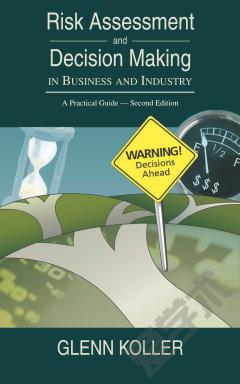
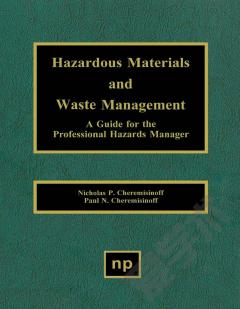


 京公网安备 11010802027623号
京公网安备 11010802027623号